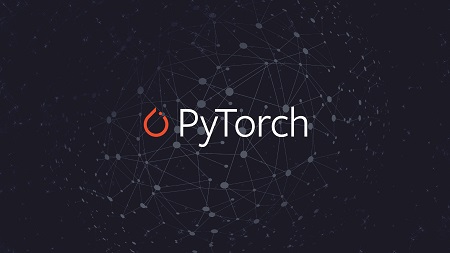
English | MP4 | AVC 1024×768 | AAC 48KHz 2ch | 3h 04m | 690 MB
This course covers the parts of building enterprise-grade image classification systems like image pre-processing, picking between CNNs and DNNs, calculating output dimensions of CNNs, and leveraging pre-trained models using PyTorch transfer learning.
Perhaps the most ground-breaking advances in machine learnings have come from applying machine learning to classification problems. In this course, Image Classification with PyTorch, you will gain the ability to design and implement image classifications using PyTorch, which is fast emerging as a popular choice for building deep learning models owing to its flexibility, ease-of-use and built-in support for optimized hardware such as GPUs. First, you will learn how images can be represented as 4-D tensors and then pre-processed to get the best out of ML algorithms. Next, you will discover how to implement image classification using Dense Neural Networks; you will then understand and overcome the associated pitfalls using Convolutional Neural Networks (CNNs). Finally, you will round out the course by understanding and using the most powerful and popular CNN architectures such as VGG, AlexNet, DenseNet and so on, and leveraging PyTorch’s support for transfer learning. When you’re finished with this course, you will have the skills and knowledge to design and implement efficient and powerful image classification solutions using a range of neural network architectures in PyTorch.
Table of Contents
Course Overview
1 Course Overview
Preprocessing Images to Use in Machine Learning Models
2 Module Overview
3 Prerequisites and Course Outline
4 Single Channel and Multichannel Images
5 Preprocessing Images to Train Robust Models
6 Setting up a Deep Learning VM
7 Image Preprocessing – Resizing and Rescaling Images
8 Cropping and Denoising Images
9 Standardizing Images in PyTorch
10 ZCA Whitening to Decorrelate Features
11 Image Transformations Using PyTorch Libraries
12 Normalizing Images Using Mean and Standard Deviation
13 Module Summary
Understanding the Drawbacks of Using Deep Neural Networks with Images
14 Module Overview
15 Deep Neural Networks to Work with Images
16 Loading and Processing MNIST Images
17 Setting up a Fully Connected Neural Network for Image Classification
18 Training a Fully Connected Image Classification Model
19 Module Summary
Introducing Convolutional Neural Networks
20 Module Overview
21 Local Receptive Fields
22 Understanding Convolution
23 Convolutional Layers
24 Pooling Layers
25 Typical CNN Architecture
26 Applying Convolutional and Pooling Layers
27 Module Summary
Building Convolutional Neural Networks for Image Classification
28 Module Overview
29 Zero Padding and Stride Size
30 Batch Normalization
31 Activation Functions
32 Feature Map Size Calculations
33 Preparing and Exploring Image Data
34 Setting up a Convolutional Neural Network
35 Training a CNN
36 Hyperparameter Tuning
37 Module Summary
Optimizing Image Classification with Hyperparameter Tuning
38 Module Overview
39 Preparing the CIFAR-10 Dataset
40 Setting up the CNN
41 Training the CNN
42 Choosing Different Activation Functions
43 Choosing Pooling Layers
44 Choosing Convolution Kernel Sizes
45 Additional Convolution Layers and Different Kernel Size
46 Module Summary
Performing Image Classification with Pre-trained Models
47 Module Overview
48 Transfer Learning
49 Using the Resnet-18 Pretrained Model
50 The Train Function to Find the Best Model Weights
51 Predictions Using Pretrained Models
52 Cleaning up Resources
53 Summary and Further Study
Resolve the captcha to access the links!